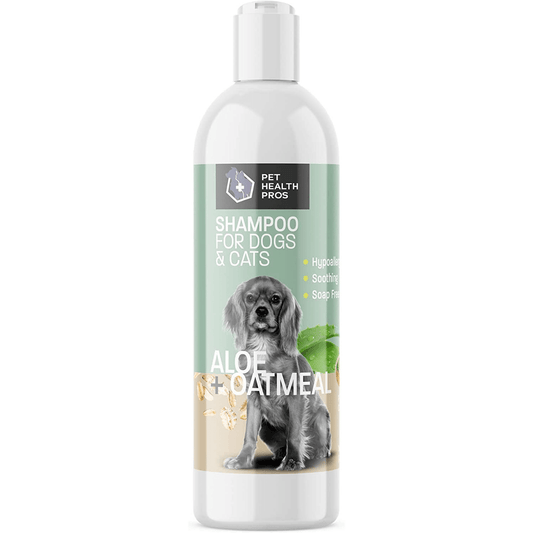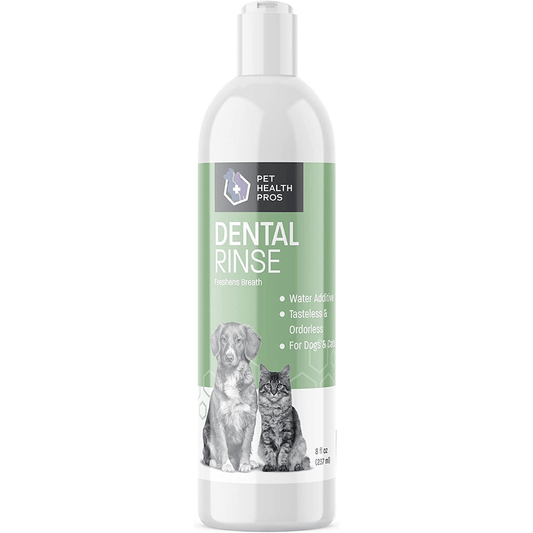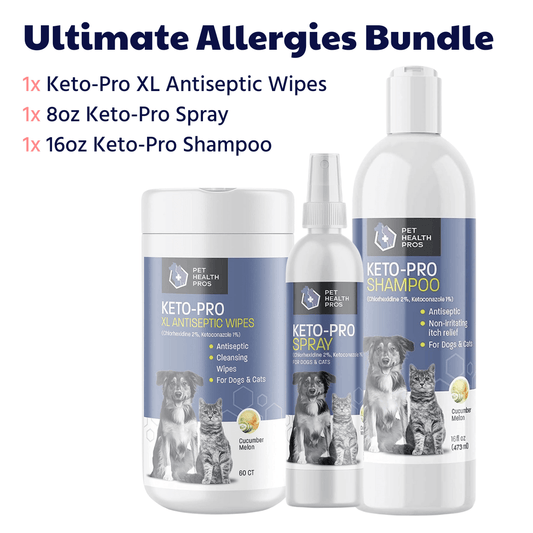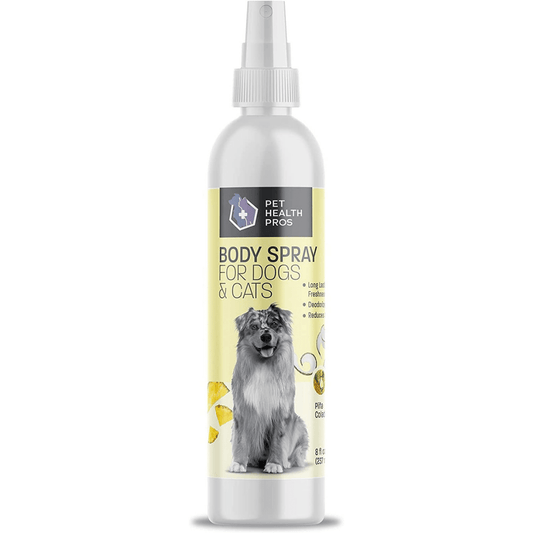Expressing your dog's anal glands is an important aspect of pet care that can help maintain your dog's health and comfort. Understanding the process and knowing when to seek professional help are key in ensuring your furry friend's well-being. Here are some key takeaways to keep in mind:
Key Takeaways
- Regularly check for signs that your dog's anal glands may need to be expressed, such as scooting or excessive licking.
- Consult a veterinarian if you are unsure about how to express your dog's anal glands or if your dog is showing signs of discomfort.
- Properly prepare for the expressing procedure by gathering necessary supplies and creating a calm environment for your dog.
- Follow a step-by-step guide to safely and effectively express your dog's anal glands, taking care to be gentle and cautious.
- Monitor your dog after the procedure for any signs of infection or discomfort, and seek professional help if necessary.
Understanding Your Dog's Anal Glands
What are anal glands in dogs?
Anal glands, also known as anal sacs, are two small glands located on either side of your dog's anus. Each gland holds a small amount of a smelly, oily substance that dogs use to mark their territory and identify each other. The secretion of this substance is a natural process, but sometimes these glands can become impacted or infected, leading to discomfort and health issues for your dog.
The anal glands typically empty themselves when the dog defecates, but problems can arise if they do not empty properly.
If you notice your dog scooting on the ground, licking or biting at the anus, or a fishy odor, these may be signs that the glands are full and your dog is uncomfortable. Regular maintenance and expression of these glands can prevent these issues and contribute to your pet's overall well-being.
Why do dogs need their anal glands expressed?
Dogs have anal glands that secrete fluid with a distinctive odor. This secretion is a natural way for dogs to mark their territory and identify themselves to other dogs. Most dogs are able to express these glands naturally when they defecate, as the pressure of the stool passing through the anus can empty the glands. However, some dogs may have difficulty with natural expression due to various factors such as obesity, soft stools, or anatomical peculiarities.
When a dog is unable to express its anal glands naturally, the fluid can build up and lead to discomfort, swelling, and even infection. In such cases, manual expression of the glands is necessary to relieve the symptoms and prevent further health issues. Regular expression can help maintain your dog's anal gland health and overall comfort.
It's important to recognize the signs that your dog may need help with anal gland expression. Ignoring these signs can lead to more serious complications, such as abscesses or impaction.
Signs that your dog's anal glands may need to be expressed
Recognizing when your dog's anal glands require attention is crucial for their comfort and health. Dogs may scoot their rear on the ground or lick their anal area excessively when their glands are full. Other signs include a distinct fishy odor, swelling near the anus, or difficulty defecating. These behaviors indicate that the anal glands are not emptying naturally during defecation and may need manual expression.
- Scooting on the ground
- Excessive licking of the anal area
- Fishy odor
- Swelling near the anus
- Difficulty defecating
It's important to address these signs promptly to prevent discomfort and potential infections. While some dogs may never experience issues with their anal glands, others may require regular expressions to maintain their well-being.
The Expressing Process
Preparing for the expressing procedure
Before you begin the process of expressing your dog's anal glands, it's important to ensure that you are fully prepared for the task at hand. Gather all necessary supplies before you start, including gloves, paper towels, and a towel to protect your clothing and surfaces. It's also advisable to work in a well-lit area so you can see what you're doing clearly.
Hygiene is paramount when dealing with anal gland expression. Make sure to wash your hands thoroughly before and after the procedure. Here's a simple checklist to help you prepare:
- Gloves to keep your hands clean
- Paper towels for any mess
- A towel to protect surfaces and clothing
- Warm water and mild soap for cleaning the area
- A quiet, comfortable space to work
Be prepared for the secretion and use a towel to clean the area. Wash your hands thoroughly afterward.
Remember, if at any point you feel uncomfortable or unsure about the process, it's best to seek professional help. Expressing your dog's anal glands can be a delicate procedure, and it's important to prioritize the comfort and safety of your pet.
Step-by-step guide to expressing your dog's anal glands
Expressing your dog's anal glands is a delicate process that should be done with care to avoid discomfort or injury to your pet. Here is a simple guide to help you through the procedure:
- Ensure your dog is calm and comfortable. A relaxed dog will make the process easier for both of you.
- Place your dog in a standing position and lift its tail gently.
- Locate the anal glands, which are situated at the four and eight o'clock positions around the dog's anus.
- Wearing gloves, use a piece of tissue or a damp cloth to cover the area.
- Apply gentle pressure upwards and inwards towards the anus.
- If done correctly, you should see a small amount of liquid expelled from the glands.
- Clean the area thoroughly after the procedure.
After expressing the glands, observe your dog for any signs of discomfort or irritation. This could indicate that the glands were not fully emptied or that the area has become irritated during the process.
It's important to note that if you're uncomfortable with this process or if your dog shows signs of distress, seek professional help. A veterinarian or a trained groomer can perform the procedure with expertise, ensuring the health and comfort of your dog.
Aftercare and monitoring for your dog
After expressing your dog's anal glands, it's crucial to monitor your pet for any signs of discomfort or complications. Ensure your dog is comfortable and observe their behavior closely for the next few hours. Look for any signs of excessive licking or scooting, which could indicate irritation or infection.
Aftercare is just as important as the expressing procedure itself. Here are some steps to follow:
- Keep the area clean to prevent infection.
- Apply a warm compress if your dog seems uncomfortable.
- Watch for any unusual discharge or foul odors.
- Limit your dog's physical activity for the rest of the day.
If you notice any persistent redness, swelling, or your dog seems to be in pain, contact your veterinarian immediately.
Regular monitoring after the procedure can help prevent further issues. It's also a good opportunity to establish a routine check of your dog's anal glands to determine if and when another expression may be necessary.
Seeking Professional Help
When to consult a veterinarian
While many pet owners can learn to express their dog's anal glands at home, there are certain situations where consulting a veterinarian is crucial. If your dog's anal glands keep leaking, or if you notice your dog continues to scoot or lick excessively, it's time to seek professional help. Persistent issues may indicate an underlying condition that requires medical attention.
Symptoms such as swelling, redness, or a foul-smelling discharge are also red flags. In these cases, attempting to express the glands yourself could cause discomfort or further complications for your dog. Here's a quick checklist to help you decide when to contact your vet:
- Your dog's anal glands are leaking persistently
- Excessive scooting or licking
- Signs of pain or discomfort
- Swelling or redness around the anus
- Unpleasant odor or discharge
Remember, timely intervention by a professional can prevent more serious health issues and ensure the well-being of your furry friend.
What to expect during a professional expressing appointment
When you visit a veterinarian for anal gland expression, you can expect a thorough and professional procedure. The vet will start by conducting a physical examination of your dog to ensure they are healthy enough for the procedure and to check for any signs of infection or impaction.
The actual expressing process is usually quick and straightforward. Your vet will wear gloves and may use a lubricant to gently press on the glands, which are located just inside the anus, to release the fluid. This is done either externally or internally, depending on the situation and the vet's preference.
After the expression, your vet will provide you with advice on aftercare and how to monitor your dog for any signs of discomfort or complications. They may also discuss dietary changes or supplements that can help maintain healthy gland function.
It's important to remain calm and provide reassurance to your dog throughout the appointment, as they may feel anxious or uncomfortable.
If you have any questions or concerns, don't hesitate to ask your vet. They are there to help and can offer valuable insights into your dog's health and well-being.
Benefits of having a vet express your dog's anal glands
Having a veterinarian express your dog's anal glands offers several advantages. Professional expertise ensures that the procedure is done correctly, minimizing the risk of injury or infection. Vets are trained to handle complications, should they arise, and can provide immediate medical attention.
Veterinarians also have the ability to diagnose underlying issues that may be causing gland problems, such as allergies or infections. This comprehensive approach to your dog's health can prevent future occurrences and lead to a more comfortable life for your pet.
The peace of mind that comes with professional care cannot be overstated. Knowing that your dog is in capable hands provides reassurance that their well-being is a top priority.
Additionally, here are some qualitative benefits:
- Assurance of a thorough and safe procedure
- Access to professional advice on aftercare and prevention
- Opportunity for a general health check during the visit
- Time-saving, as the procedure is typically quicker when done by a professional
If you're noticing signs that your pet may need professional care, don't hesitate to seek help. At Pet Health Pros, we offer a wide range of high-quality, vet-approved products to support your pet's health and wellness. From soothing skin treatments to dental care essentials, our products are made in the USA with your pet's best interest in mind. Visit our website today to explore our selection and take the first step towards a happier, healthier pet.
Conclusion
In conclusion, expressing your dog's anal glands is an important aspect of pet care that should not be overlooked. By following the step-by-step guide provided in this article, pet owners can ensure the health and comfort of their furry companions. Remember, regular maintenance of your dog's anal glands can prevent potential health issues and contribute to their overall well-being. Stay informed, stay proactive, and prioritize your pet's health and happiness.
Frequently Asked Questions
What are anal glands in dogs and why do they need to be expressed?
Anal glands in dogs are small sacs located near the anus that contain a smelly fluid. These glands may need to be expressed if they become impacted or infected, causing discomfort to the dog.
How often should I express my dog's anal glands?
The frequency of expressing your dog's anal glands depends on the individual dog. Some may require it monthly, while others may never need it. It's best to consult with your veterinarian for guidance.
Can I express my dog's anal glands at home?
While it is possible to express your dog's anal glands at home, it is recommended to seek guidance from a professional or veterinarian to ensure proper technique and avoid injury to your dog.
What are the signs that my dog's anal glands need to be expressed?
Signs that your dog's anal glands may need to be expressed include scooting on the floor, licking or biting the anal area, a foul odor, and swelling or redness around the anus.
Is expressing a dog's anal glands painful for the dog?
When done correctly, expressing a dog's anal glands should not be painful. However, if your dog is showing signs of discomfort during the process, it's important to stop and consult a professional.
Are there any risks associated with expressing a dog's anal glands?
While expressing a dog's anal glands is generally safe when done properly, there are risks of injury or infection if not performed correctly. It's best to have a professional demonstrate the procedure before attempting it at home.









